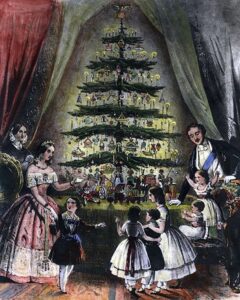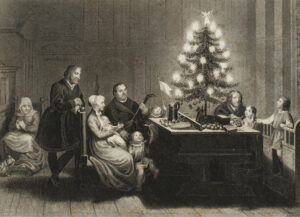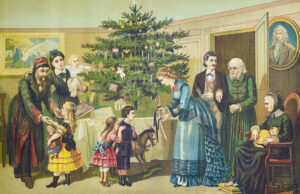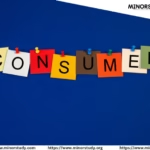🎄 All About Christmas: A Celebration of Joy, Hope, and Giving
Christmas is not just a festival—it’s a feeling, a cultural phenomenon, and a season of love that transcends religious boundaries. Celebrated globally on December 25th, it commemorates the birth of Jesus Christ, yet its modern form has expanded far beyond its Christian origins.
- 🎄 All About Christmas: A Celebration of Joy, Hope, and Giving
- 📜 History of Christmas
- 📅 Timeline of Christmas Through the Ages
- 🎁 25 Fascinating Facts About Christmas
- ❓ Frequently Asked Questions (FAQs)
- ✨ Significance of Christmas
- 🕯️ Observance and Celebrations
- 💌 Wishing and Greeting on Christmas
- 🌟 Why Christmas Matters in Our Daily Lives
- 📌 Important Points to Remember
- 🧭 Conclusion: A Festival That Brightens the World
📜 History of Christmas
The story of Christmas dates back over 2000 years, rooted in the Nativity of Jesus, born to the Virgin Mary in Bethlehem.
🔹 Origins:
Biblical Account: According to the Gospels of Matthew and Luke, Jesus was born to fulfill ancient prophecies of a Messiah.
Pagan Influence: The date December 25 was chosen to align with Roman festivals like Saturnalia and Sol Invictus, which celebrated the winter solstice and sun god.
First Christmas Celebration: The first recorded Christmas was in Rome around 336 AD, under Emperor Constantine.
🔹 Evolution:
Middle Ages: Christmas became a mix of religion and rowdy celebrations.
Victorian Era: Traditions like Christmas trees, caroling, and cards became mainstream.
Modern Day: Now marked by Santa Claus, gift exchanges, global shopping sprees, and acts of kindness.

📅 Timeline of Christmas Through the Ages
| Year/Period | Milestone |
|---|---|
| 336 AD | First recorded Christmas in Rome |
| 800 AD | Charlemagne crowned on Christmas Day |
| 1100s | Christmas recognized across Europe |
| 1600s | Christmas banned by Puritans in England and parts of America |
| 1843 | First Christmas card printed |
| 1870 | Declared a federal holiday in the USA |
| 1931 | Coca-Cola popularizes the modern image of Santa Claus |
| 2020s | Christmas becomes a worldwide cultural celebration |

🎁 25 Fascinating Facts About Christmas
The word “Christmas” comes from “Cristes Maesse,” meaning Mass of Christ.
Santa Claus is based on St. Nicholas, a kind bishop from Turkey.
The tradition of Christmas trees originated in Germany.
Jingle Bells was the first song broadcast from space.
Rudolph the Red-Nosed Reindeer was created by a department store as a marketing gimmick.
The colors red, green, and gold symbolize life, rebirth, and wealth.
“Xmas” is not disrespectful; “X” is the Greek letter Chi, representing Christ.
Eggnog originated in medieval Britain.
Around 28 sets of LEGO are sold every second during Christmas.
The biggest Christmas gift in history? The Statue of Liberty from France to the USA.
“Silent Night” was declared a UNESCO cultural heritage song.
Over 2 billion people celebrate Christmas worldwide.
Christmas lights were once real candles.
Japan celebrates Christmas with KFC as a popular tradition.
Iceland has 13 Santas and a Christmas Cat.
The average American spends over $800 on Christmas shopping.
The term “Boxing Day” refers to gift boxes given to servants.
“Feliz Navidad” and “Merry Christmas” are globally recognized greetings.
The abbreviation “Noel” comes from Latin natalis meaning “birth.”
Christmas Eve is considered more sacred than the day itself in many cultures.
Christmas markets originated in Germany and Austria.
Some African countries blend local customs with Christian traditions.
In India, Christmas is celebrated with banana and mango trees as decorations.
Charity sees a peak in donations during the season.
The Christmas spirit has inspired countless books, movies, and songs.

❓ Frequently Asked Questions (FAQs)
Q1: Why is Christmas celebrated on December 25?
A: Though the exact birth date of Jesus is unknown, December 25 was chosen to align with Roman winter festivals and symbolize light in the darkest time of year.
Q2: Is Christmas a Christian-only festival?
A: While rooted in Christianity, Christmas is now celebrated by non-Christians worldwide as a season of giving, joy, and unity.
Q3: Who is Santa Claus?
A: Based on St. Nicholas, he evolved into the jolly figure known today thanks to 19th-century poems and 20th-century advertising.
Q4: What are common Christmas traditions?
A: Decorating trees, exchanging gifts, attending mass, singing carols, baking cookies, and community service.
Q5: Why are trees used in Christmas?
A: Evergreen trees symbolize eternal life. Decorating them began in Germany and spread through Europe to the rest of the world.
✨ Significance of Christmas
Christmas is a festival rich in spiritual, social, and cultural significance.
🔹 Spiritual Significance:
Celebrates the birth of Jesus, who symbolizes hope, peace, and salvation.
Encourages virtues like forgiveness, compassion, and gratitude.
🔹 Social Significance:
Brings families together—one of the most family-oriented festivals.
Promotes community bonding and universal goodwill.
Reinforces the joy of giving and sharing.
🔹 Economic Significance:
Boosts global retail, hospitality, and travel sectors.
Seasonal employment rises significantly.

🕯️ Observance and Celebrations
🌍 How It’s Celebrated Around the World:
USA & Canada: Gift exchanges, Santa parades, turkey dinners.
UK: Christmas crackers, mince pies, and Queen’s speech.
Germany: Advent calendars and Christmas markets.
Philippines: Longest Christmas season in the world.
India: Midnight masses, star lanterns, and cake feasts.
Africa: Community meals, church services, and vibrant music.
🎉 Key Activities:
Attending midnight mass or church service.
Decorating homes with wreaths, lights, and trees.
Cooking festive meals and desserts.
Gift exchanges among loved ones.
Volunteering or donating to the needy.
💌 Wishing and Greeting on Christmas
Wishing someone “Merry Christmas” is more than just a phrase—it’s a warm embrace of hope and unity.
Common Greetings:
Merry Christmas!
Happy Holidays!
Season’s Greetings!
Feliz Navidad (Spanish)
Joyeux Noël (French)
Shubh Christmas (Hindi)
Sample Human-Friendly Messages:
“May your home be filled with the warmth of family and joy of giving this Christmas!”
“Wishing you peace, love, and magical moments this holiday season.”
“Let’s spread kindness like snowflakes—everywhere, effortlessly.”
🌟 Why Christmas Matters in Our Daily Lives
🎯 Personal Impact:
Encourages self-reflection and gratitude.
Reconnects us with family and friends.
Inspires generosity, kindness, and emotional healing.
💡 Lifestyle Impact:
Helps people take a pause from routine and focus on joy.
Encourages home-making traditions like cooking and decorating.
Inspires creative expression through art, music, and design.
🤝 Societal Impact:
Sparks community togetherness through public events and charity drives.
Raises awareness and funds for causes and the underprivileged.
Teaches children the values of kindness, hope, and togetherness.
📌 Important Points to Remember
Christmas is not just about gifts and decorations, but about spreading light in dark times.
It’s a unifying force across religions and nations.
The season promotes essential values like love, humility, and giving.
🧭 Conclusion: A Festival That Brightens the World
In a world often overwhelmed by stress, division, and materialism, Christmas emerges as a beacon of hope, warmth, and humanity. It reminds us that even in the darkest winters, light can be found—within us and around us.
Whether celebrated with a tree, a candle, or a kind gesture—Christmas is a global testimony to the human spirit’s longing for connection, compassion, and joy.
So this year, let Christmas be more than a day—let it be a state of heart.








